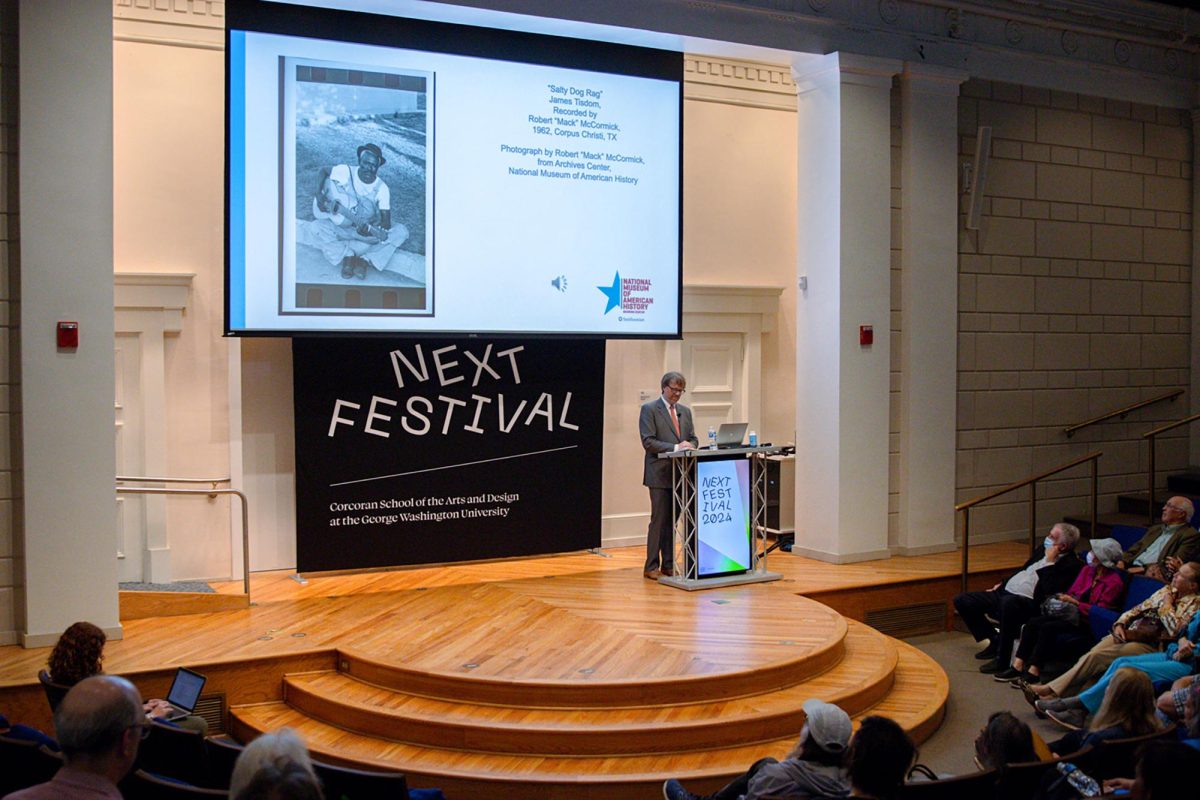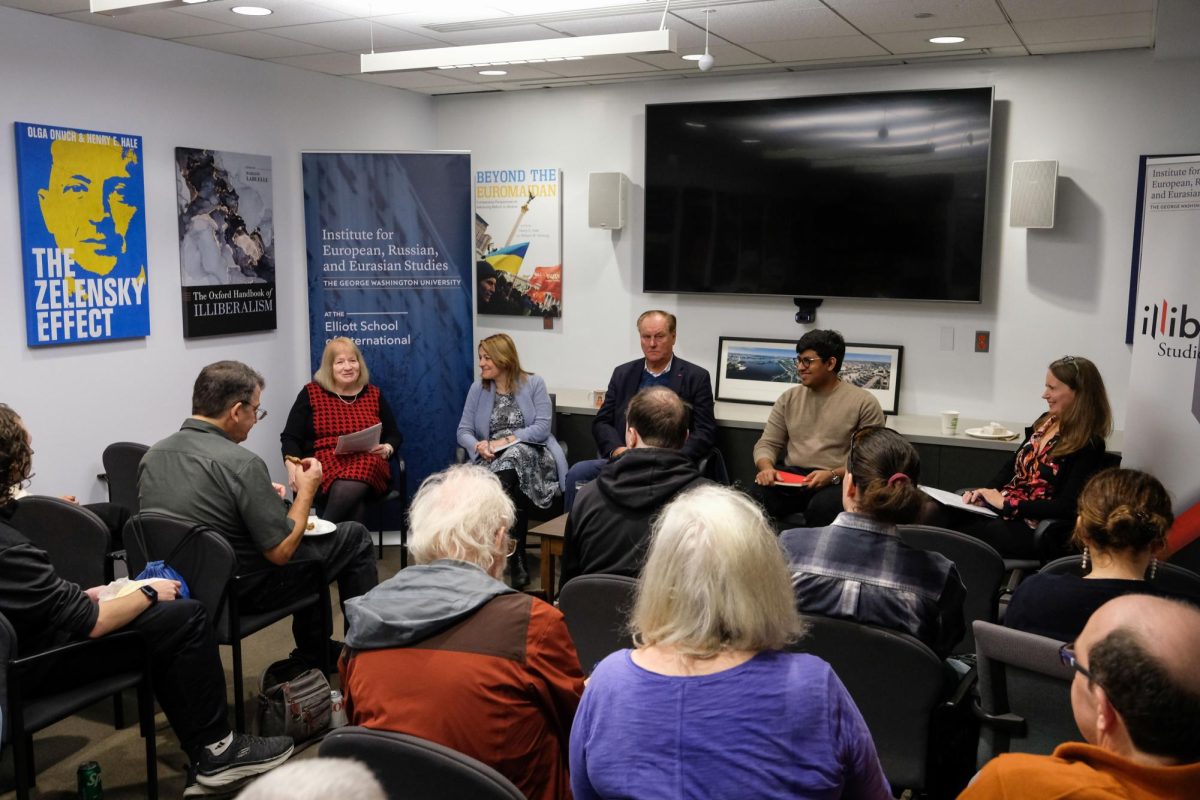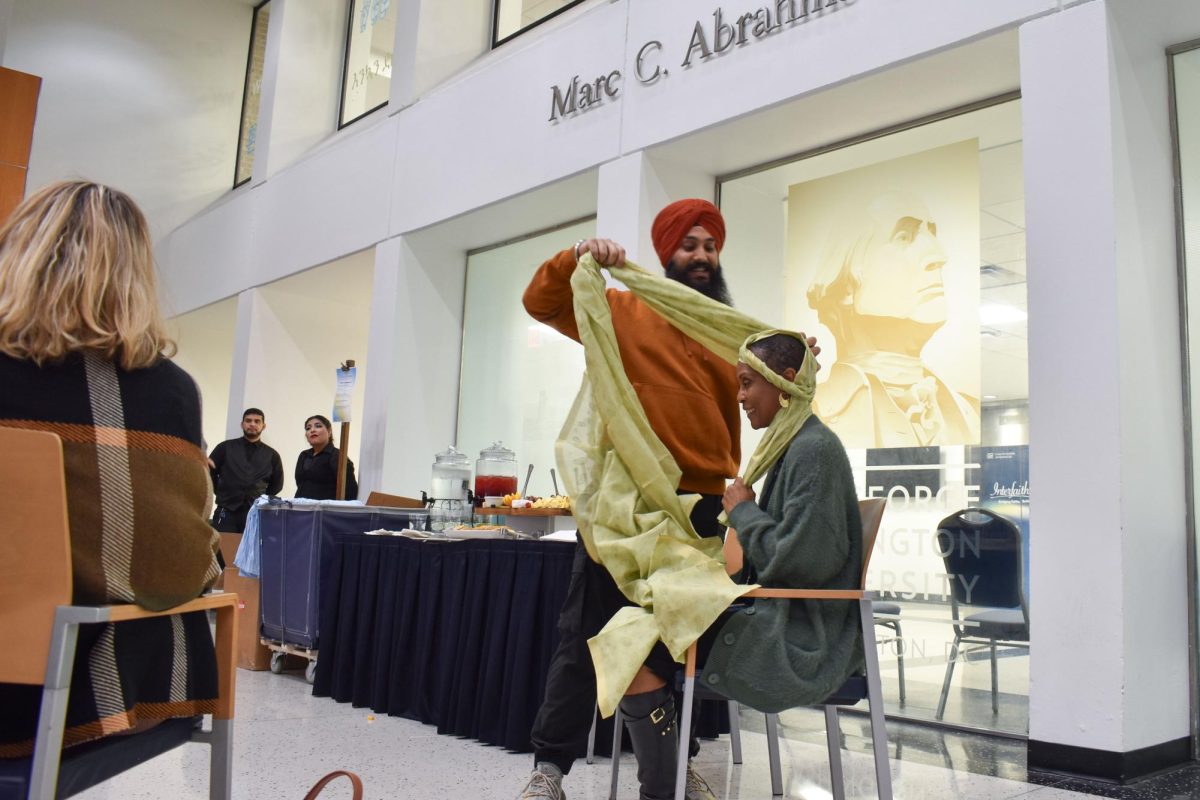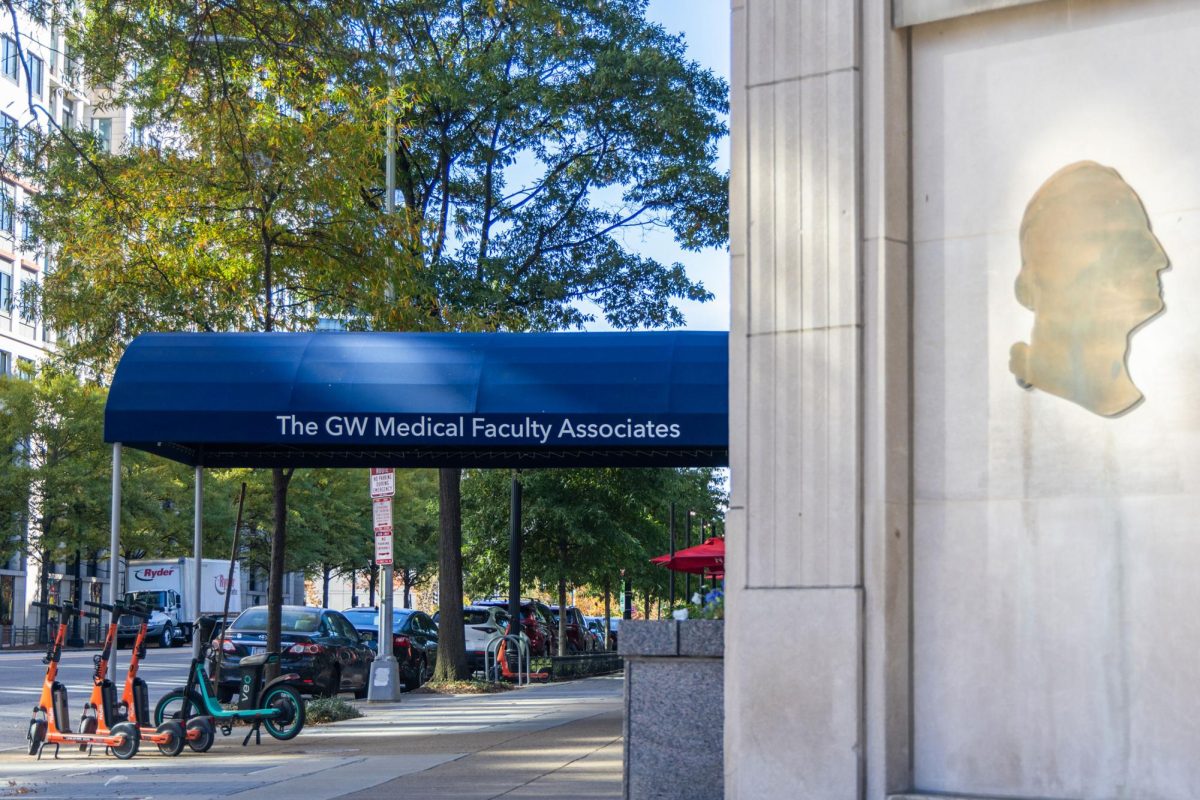A curator of music and musical instruments for the Smithsonian National Museum of American History spoke about the museum’s acquisition of musicologist Robert “Mack” McCormick’s musical archive in the Flagg Building on Wednesday.
John Troutman, the chair of the National Museum of American History’s Division of Culture and the Arts, spoke about McCormick’s archive of interviews, photographs and recordings of southern folk musicians as the opening event for the Corcoran School of the Arts and Design’s annual NEXT festival. NEXT is a monthlong event that celebrates graduating students by featuring their work in physical exhibits, live performances and research-based presentations, according to the Corcoran website.
Troutman said the museum’s curators organized the archive, which McCormick referred to as “the monster,” starting in 2019 after McCormick’s daughter Susannah Nix gifted the archive to them.
“The research, notes, manuscripts, music ephemera and photographs provided a wide lens into American vernacular music making,” Troutman said.
He said part of the archive outlined McCormick’s investigation of the life of Robert Johnson, an American blues musician and songwriter who’s work inspired artists from The Rolling Stones to Bob Dylan.
“Johnson’s music career was short-lived. He recorded a total of 29 songs in 1936 to 1937, and some alternate takes to some of those songs, with modest sales before he died in 1938 at the age of 27,” Troutman said.
After Johnson’s death, Columbia Records released an album featuring a selection of his recordings that boosted his reputation, Troutman said. McCormick began to look into Johnson’s story following a folk music revival in the 1960s, when more folk, country and blues fans became acquainted with Johnson’s music, Troutman said.
“In 1968, he began in earnest to search for friends and, he hoped, the family of Robert Johnson, as McCormick became obsessed with the idea of writing a definitive book on Johnson’s mysterious life and breathtaking music,” Troutman said.
Through the Smithsonian’s examination of McCormick’s documents on Johnson, Troutman said it became evident that McCormick had unethically obtained some never before seen photos of Johnson by keeping photos Johnson’s sisters gave to him during interviews. Johnson’s sisters later claimed they had meant to only lend him the photos, Troutman said.
Troutman said by the summer of 2021, Smithsonian curators decided to return the stolen photos to the living members of the Johnson family. Troutman said returning unethically obtained materials has been taken up as a policy across all Smithsonian projects.
“Ultimately, you must continue to question to whom do such archives or collected stories, writings and recordings truly belong. Who owns the stories? Who can tell them? And who decides?” said Troutman.
He said Smithsonian curators typically make archived materials available to any member of the public who is interested in it before they curate the collection, but curators kept the archive private due to the unethical sourcing of some of the materials.
“Because we found these problems in this archive, we kept the archive closed to the public until we could feel as confident as possible about the decisions that we’re making in regards to the items of questionable provenance, and that’s not typical practice,” Troutman said.
He said many previously unheard musicians are now preserved for the public to study throughout the archive.
“The stories of so many extraordinary musicians, sometimes previously unknown as dominant musical history narratives, now in the present can be heard once again,” Troutman said.










